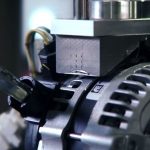Autoelectro recently had two identical part number OE units for a late Renault application on test, so it would be fair to assume that both units were the same, given they looked identical and more importantly had identical OE numbers.
On test one of the units tested as per the expected specification but whilst other unit showed many similar characteristics it was without doubt different and produced a different set of results.
Autoelectro is one of the UK’s leading remanufacturers and supplier of quality rotating electrics, continuously trading since 1986.
It was established, through contacts in OE, that this unit had fitted the next generation regulator, something that had not been seen or recognised in the aftermarket.
The concern for Autoelectro is that the units from OE had identical part numbers, although the late generation was interchangeable with the earlier applications the earlier unit would not work in the late applications.
As a result of the findings Autoelectro now only remanufactures using the late generation regulator, avoiding any issues for our customers and installers.
Nick Hood, Autoelectro UK Sales Manager, said “Without our investment in test equipment and our wealth of knowledge and experience it would have been virtually impossible to isolate this problem.”
Autoelectro Alternator Computerised testing
Autoelectro Starter Motor Computerised testing
The advantage Autoelectro has is that remanufactured products are built to or exceed OE specifications and will have any design faults rectified, meaning the company can focus on selling the product, rather than ‘just another box’.










